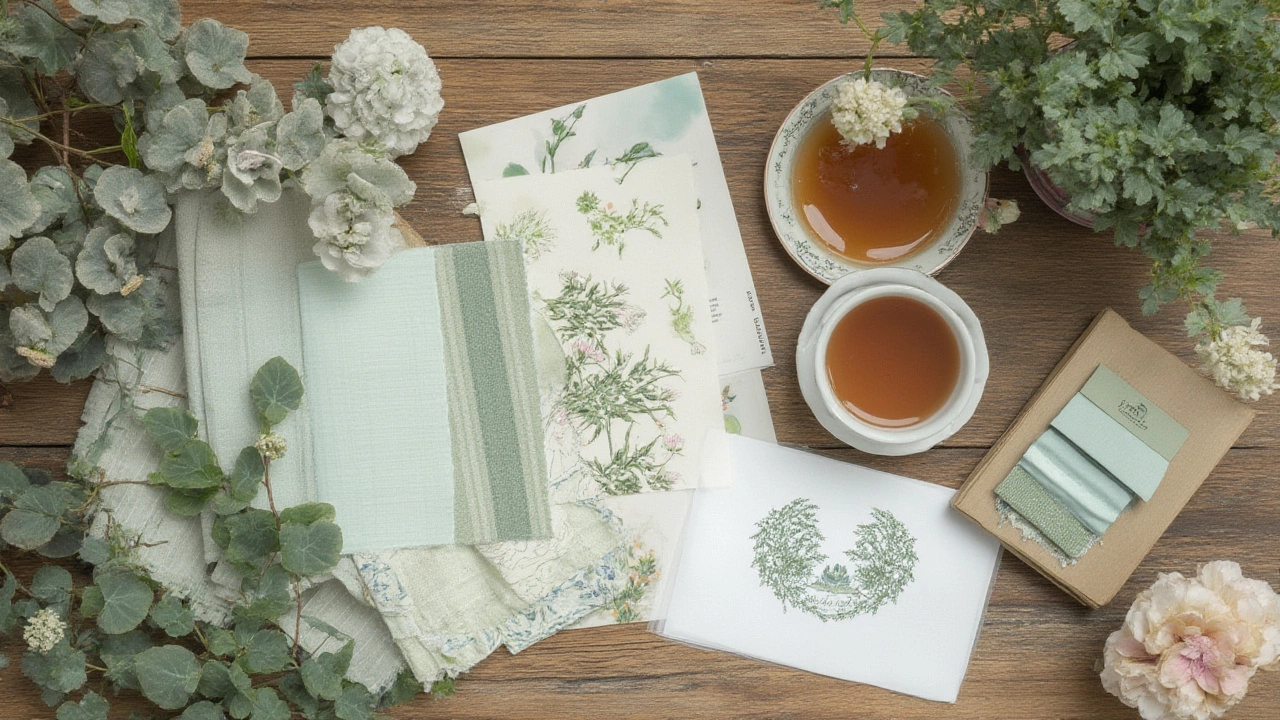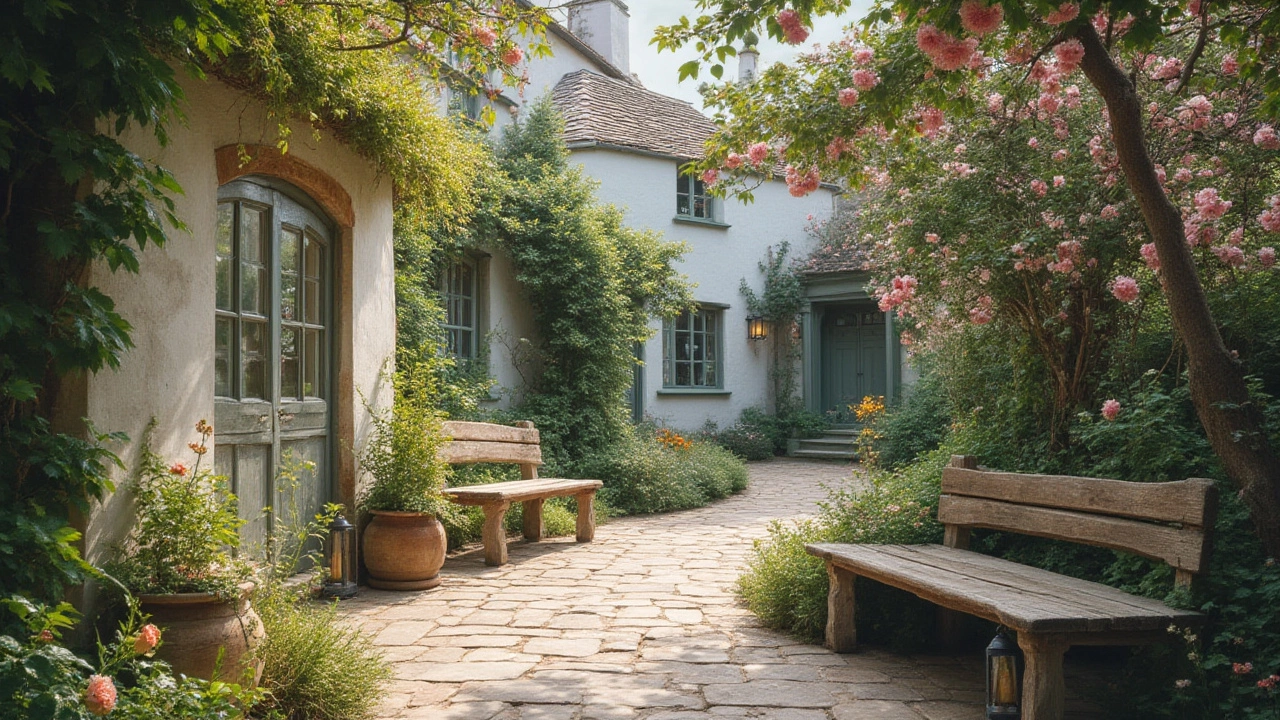Mixing Farmhouse and Cottage Style: Design Tips and Real-World Inspiration
11 Jul, 2025Picture this: a home that wraps you up like your favorite blanket, with worn wood floors, mismatched chairs, fresh-picked flowers on the windowsill, and not a single sleek, soulless detail in sight. For years, people have clung to either farmhouse or cottage style to capture this feeling. But what happens if you take the best bits from both? Here’s something wild—mixing farmhouse and cottage isn’t just possible, it actually looks downright phenomenal when done right. The idea isn’t new—real homes in the rural U.S. and British countryside have been blending weathered beams with floral prints for generations. But in the last five years, this approach has exploded. Interior designers point to the pandemic era as a turning point, when more of us obsessed over making our homes nurturing, yet stylish. Since 2021, Pinterest searches for “farmhouse cottage decor” have jumped by over 250%. Clearly, people are hungry to break the design rules and create homes full of comfort and character.
What Sets Farmhouse and Cottage Styles Apart—And Why Mixing Works
At first glance, farmhouse and cottage might sound interchangeable—both center around comfort, warmth, and a hint of nostalgia. Dig a little deeper, though, and you’ll see some real differences. Traditional farmhouse style is rooted in practical, down-to-earth American rural living. Think shiplap walls, sturdy oak tables, barn doors, and vintage signs. Colors tend to be muted—lots of whites, taupes, and greys—with sturdy, hardworking materials like iron, wool, and reclaimed wood showing up everywhere. Farmhouse is neat but not fussy, blending modern touches (hey, metal light fixtures) with a rugged backbone.
Cottage style, on the other hand, channels English or French countryside charm. It’s all about floral fabrics, a riot of color, curated collections of knick-knacks, and layers—lots and lots of layers. Picture painted furniture with scuffed edges, open shelves of china, and rooms that bloom with sunlight. Softness rules here, both in pattern and shape, and a sense of whimsy peeks out in little details like hand-thrown pottery or wonky wooden stools. While farmhouse leans rustic and straightforward, cottage style is lighter and more playful, mixing and matching with abandon.
Why does mixing these two work so well? Turns out, their differences are their biggest asset. Farmhouse’s rugged, unfussy side grounds cottage’s delicate prettiness. Cottage’s color and lightness soften farmhouse’s sometimes stark palette. This balance lets you create a home that feels welcoming but never chaotic, intentional but never cold. According to designer Debbie Mathews, blend these styles thoughtfully and “you get a look that’s rich, layered, and way more personal than sticking to one lane.”

How to Blend Farmhouse and Cottage: Tips, Inspiration, and Real-Life Tricks
If the thought of merging farmhouse and cottage style makes your palms sweaty (Will it clash? Will my great aunt’s milk jug look weird next to my plaid chairs?), relax. Mixing is easier than you think, and there’s loads of inspiration out there. Here’s how people are pulling it off—and how you can, too.
- Stick To a Simple Base: Start with a blank-ish slate: white walls, pale wood floors, and neutral larger pieces. This is your farmhouse bedrock. Layer in cottage energy with soft pastels, gentle greens, sky blues, or even a buttercup yellow side table.
- Mix Materials: Farmhouse is big on reclaimed wood and aged metals. Cottage loves painted furniture and floral upholstery. Try a chunky farmhouse table with vintage painted dining chairs. Or a shiplap wall behind a floral-covered armchair.
- Keep It Cozy: Both styles worship comfort. Drape chunky knit throws on a faded floral sofa. Layer area rugs—a natural jute base, then a faded Persian on top. According to designer Ashley Gilbreath, “If you’re debating whether to add another pillow or plant, the answer is yes.”
- Blur the Lines: Instead of dividing rooms by style (“kitchen is farmhouse, living room is cottage”), mix in every zone. A farmhouse sink looks dreamy with a cottage-patterned Roman shade above it. Mix and match your lighting—iron pendants with a porcelain lamp (bonus points if it’s slightly chipped).
- Make it Personal: Let your personality show. Showcase quirky collections, family heirlooms, thrift shop scores, and anything with a story. A farmhouse mantle with a cheeky collection of vintage teacups nails the vibe.
- Say Yes to Imperfection: Nothing should look precious. Slightly worn finishes, patinaed brass, chipped pottery—these breathe life into the space.
- Pile On Nature: If you see a home that nails this mix, odds are good you’ll spot a vase of wildflowers or a basket of apples. Cut garden blooms or bring in whatever’s in season. Cottage loves wildflowers, farmhouse loves branches in pitchers. You win either way.
- Shop Smart: You don’t need designer budgets. Thrift stores and flea markets are gold mines. In a survey by Country Living magazine, 84% of readers who blend these styles say at least half their decor is secondhand.
Ready for more specifics? Here’s a look at iconic elements of each style and how they play together.
| Farmhouse | Cottage | How They Work Together |
|---|---|---|
| Shiplap walls | Floral prints | Brighten shiplap with botanical cushions or curtains |
| Reclaimed wood | Painted furniture | Pair a raw wood dresser with a pastel side table |
| Barn lights | Porcelain lamps | Mix overhead barn pendants with vintage lamp on a floral tablecloth |
| Iron bed frames | Eyelet linens | Top an iron bed with a ruffled, patterned comforter |
| Galvanized bins | China teapots | Use baskets for storage, display quirky china for charm |
There’s no one-size-fits-all list. The best homes in this style feel collected, not curated. Scroll through Instagram or magazines, and you’ll see real homes bucking trends: a beamed ceiling above a butter-yellow settee, or chipped subway tile behind a farmhouse stove. The more personal, the better. The goal isn’t to copy someone else’s vision, but to piece together your own patchwork—old barn wood here, floral china there—into something that feels unmistakably yours.

Small Steps to Start Mixing, Mistakes to Dodge, and Final Takeaways
If you’re new to blending cottage and farmhouse, it pays to start with simple moves and grow from there. Come at this with the mindset of a collector, not a shopper—you’re building memories, not filling a checklist. Here’s a straight-up playbook from people who live and breathe this mashup:
- Begin with textiles if you’re nervous. Swap in a ruffled linen duvet, or add floral pillows to your neutral sofa.
- Next, play with accessories. Vintage tin signs, enamel pitchers, an old quilt tossed over a chair—mix farmhouse toughness and cottage whimsy in little doses.
- For bigger impact, look at your lighting. Try pairing a classic black barn pendant with delicate lace curtains or painted window frames.
- If you can, bring in plants or flowers. Even a small geranium in a chipped teacup adds life and color.
And hey, what about common mistakes? The number one error: trying to make the space look “done” overnight. Homes that really feel like you walked into a cozy farmhouse cottage took months (sometimes years) to evolve. Don’t buy everything in one mega shopping trip at Target. Comb through flea markets, family attics, and Etsy shops. Second biggest flub: over-matching. If every surface is white, or every chair is floral, the vibe gets stiff fast. Embrace a little disorder. According to British designer Sophie Robinson, “imperfection is the secret sauce.”
- Don’t crowd your rooms. Both farmhouse and cottage designs work best when rooms can breathe.
- Watch the palette. Stick to three main colors, then layer in smaller hits with accessories.
- Say no to fake aging products. Real patina beats artificial distressing every time.
If you keep finding yourself second-guessing, trust your gut—the more you live with the mix, the more you’ll figure out what makes you smile every time you walk in the door. In the end, the real magic of blending farmhouse and cottage is about telling your own story through the things you love—whether that’s a paint-chipped chair from grandma, or a shiny new galvanized lamp you snagged from a hardware store. Take your time. Work piece by piece. And remember: your home isn’t an Instagram post—it’s your everyday backdrop. When you mix farmhouse and cottage, it’s less about perfection and more about comfort, memory, and that simple, unshakeable feeling of home. And that’s something nobody else can copy.

 by
by